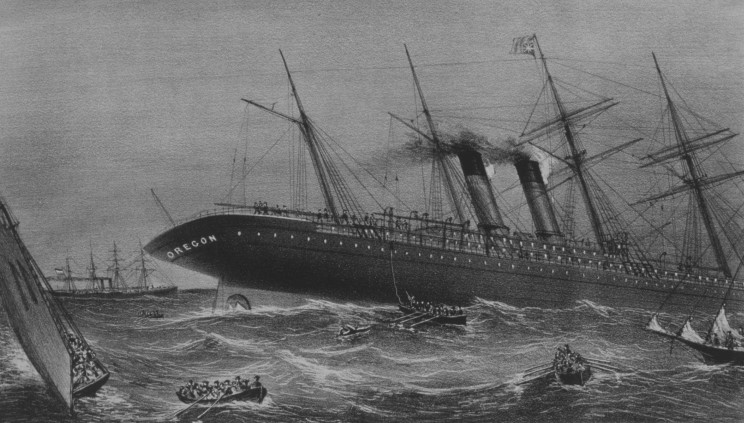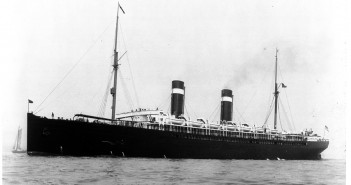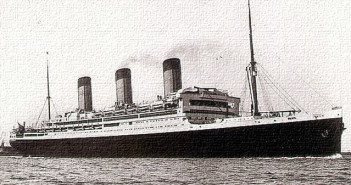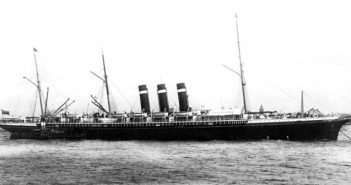Cunard Line’s early success was largely due to the company’s reputation for putting safety ahead of speed and profits. Yet Cunard liners weren’t immune to the occasional disaster, as the Oregon (1883) sinking proved.
Originally built for Guion Line, (aka the Liverpool and Great Western Steamship Co., which operated a Liverpool-Queenstown-New York route from 1866 to 1894), Oregon was comfortable, technologically sophisticated (for the time) and fast. She took the Blue Riband from fleetmate Alaska (1881) on 19 April 1884, completing a westbound transatlantic crossing in 6 days, 10 hours and 10 minutes at an average speed on 18.56 knots. That’s actually faster than a typical modern-day Queen Mary 2 crossing.
Despite her record-setting performance, Oregon was sold to Cunard after completing only a few voyages for Guion. While headed into New York on 6 March 1886, Oregon collided with a schooner and sank approximately 15 miles (33 km) east of Long Island, New York. All of Oregon’s passengers and crew members survived the sinking, despite the fact that the liner’s lifeboats could accommodate only about half of the ship’s souls. The survivors were eventually rescued by vessels, including NDL’s Fulda, that were alerted to the disaster by signal flares fired from the sinking Oregon.
The Oregon wreck, sitting at a depth of 130 feet (39.6 meters), is occasionally visited by divers. Although the liner’s hull and iron decks collapsed many years ago, her record-setting triple-expansion steam engine still towers some 40 feet above the ocean floor.
To continue, click the NEXT button on the top of this page.




